How to Talk to Kids About Climate Change
Key Points
-
In a time where climate change makes it on to nearly every front page, it’s clear we need to have frank conversations with our youth about the planet’s future.
-
But talking about climate change is difficult even for adults.
-
Here are 5 essential tips for talking about climate in the home or the classroom.
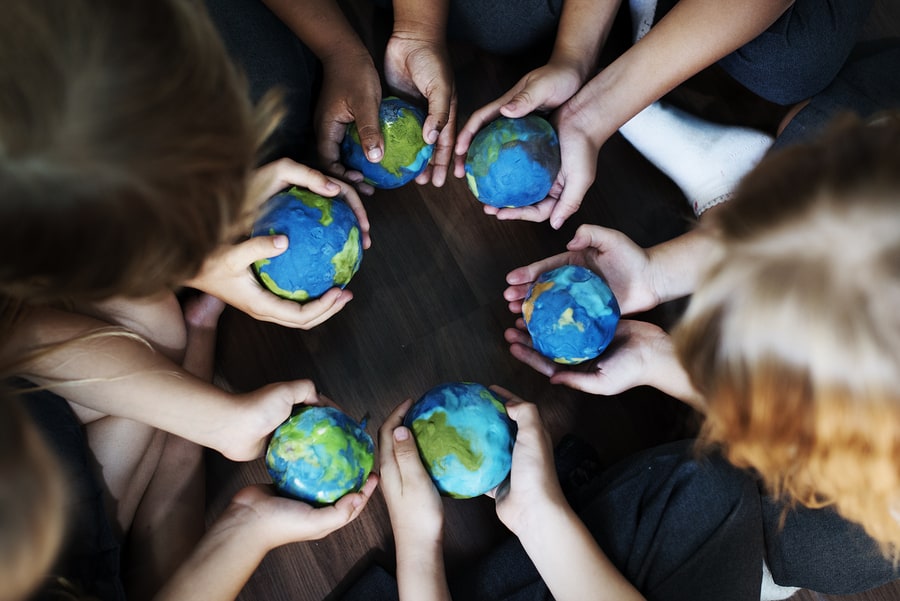
By: Lauren Dalmatoff
In a time where climate change makes it on to nearly every front page, it’s clear we need to have frank conversations with our youth about the planet’s future. But talking about climate change is difficult even for adults. It can be a divisive topic that leaves us feeling hopeless. Can you imagine the impact this has on our kids?
A recent study has shown that thinking and talking about climate change induces anxiety, and for the developing mind of a child, these stressors can be particularly harmful to their mental health. So
A good start is to add the topic of environmental sustainability to children’s school curriculum since the school is already a space where kids are ready to tackle difficult subjects, challenge assumptions, and expand their knowledge.
When your kids are at home, you continue these conversations to build upon what they’re learning at school with fun eco-friendly activities that can help teach how kids can help climate change and how they can protect the planet.
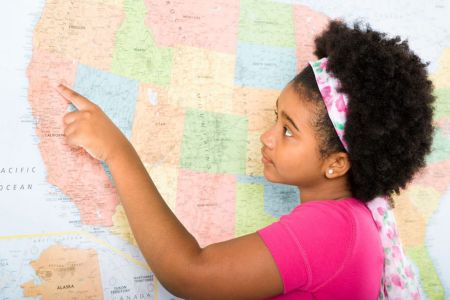
While it may seem daunting to introduce climate change and sustainability to kids, it’s important to remember how significant this will be in their lifetimes. Helping even the youngest students understand the natural world around them – and why it’s important to conserve it – will create a generation of people equipped to make change.
5 Essentials for Talking About Climate In the Home or the Classroom
Teaching the next generation about environmental sustainability is one of the best things we can do for our planet. After all, they will be the ones facing the realities of climate change in the future.
Here are 5 ways to get kids thinking about sustainability in a positive and actionable way:
1. Invite curiosity.
Kids are naturally curious about the world around them! Start with an exploratory look at how the nearby environment is important or interesting. Things like trees, grass, rocks, rivers, insects can all be seen, touched, and talked about. Allow children to follow their own curiosities and discover what they connect with the most. Then you can get books or look online together to learn more about what interests them.
2. Instill ownership.
A sense of ownership or responsibility creates a generation of eco-warriors! This can be developed by discussing current solutions to problems like too much trash or not enough trees, and brainstorming new ones. Don’t dwell on what we haven’t done, focus on all the possible things we can do. You’ll be amazed at the creative ideas kids come up with!
3. Provide regular opportunities to connect with nature.
We hear about it a lot – kids these days are spending more time in front of a screen and less time outside. Giving kids a chance to play and explore the great outdoors gives them a personal connection with nature they will carry throughout their entire lives. Even if they’re just running around being messy, outdoor play instills a positive and personal value of the environment.
4. Hold space for feelings.
Talking about climate change is tough for everyone, so it’s important to acknowledge the emotional aspect of it all. Do this by allowing opportunities for students to talk about how they are feeling, and remind them it’s okay to be upset. Make sure to end any conversation with a focus on what actions they can take to feel empowered and inspired.
5. Keep it real and age-appropriate.
Kids want to understand the world they live in, and they want our help. It’s important to give students the truth. That being said, we need to keep it realistic and consider their age, experience, and most importantly, how we present it. The way we offer up information impacts the way kids understand it, so it’s important to include the facts and opportunities for meaningful change.
Educators: Ready, Set… Go!
We created the T.R.E.E.S. School Program: Teaching Reforestation, Environmental Engagement, and Sustainability, to help you bring environmental awareness into the classroom.
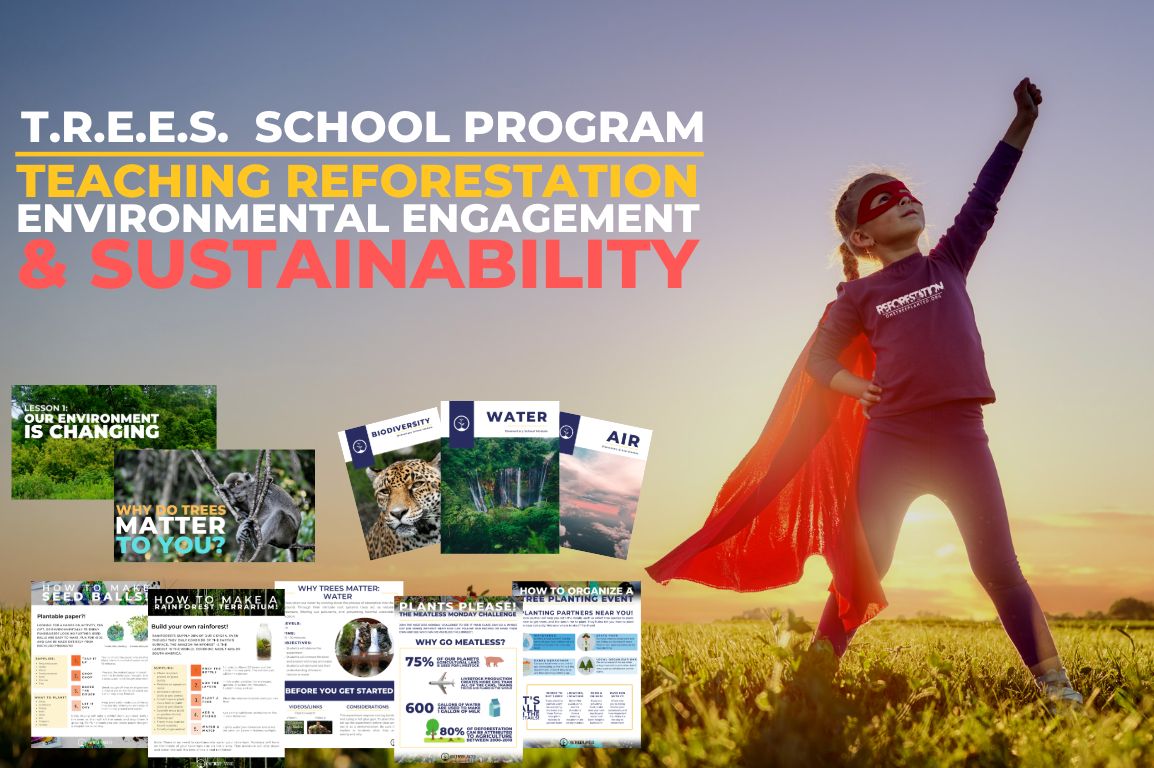
With our lesson plans, students will get a comprehensive look at what’s happening in our environment, and the role they play in changing it. Our modules give your class a unique mix-and-match experiences to fit their interests.
We have also put together our favorite assets and activities that you can use to bring your environmental lessons to the next level and start your green school initiative.
What does our sustainability curriculum look like?
Teaching Reforestation: As One Tree Planted has grown we’ve seen how important it is for people of all ages to learn about the benefits of reforestation, but noticed a gap in children’s education. This is why we are bringing reforestation to students by educating them about what’s happening, where it’s happening, and why it’s happening. With this program we want to teach students the role trees and reforestation have in creating a healthier, more stable climate, and inspire them to take positive action against deforestation and environmental degradation.
Environmental Engagement: We have designed our lessons, modules, and activities to get kids talking the talk and walking the walk. Not only should students learn about climate change and its effects, but they should also be given the tools to take action and improve the environment around them in a way that’s fun and easy to understand. Hands-on activities like “How to make an egg carton garden”, or “How to start composting” can be used in the classroom to teach students how they can integrate environmental stewardship into their own lives.
Sustainability: The ultimate goal of the T.R.E.E.S. school program is to raise a generation that cares about creating a healthier future for our planet, and knows how to make that happen! We want to help students understand what it means to be sustainable and to make decisions with the future of our planet in mind. Today’s students are the innovators of tomorrow. By providing resources and how-to’s we want to help you create the greenest student community you can.
Make sure to check out our T.R.E.E.S. school program and get your school started on the path to sustainability!
This post was originally published on onetreeplanted.org.
Lauren Dalmatoff is an environmental education program coordinator for One Tree Planted. She designed and created the program and manages daily operations.




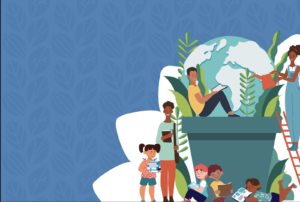
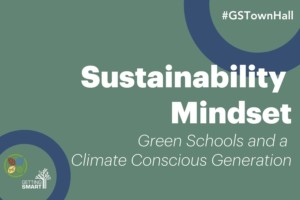
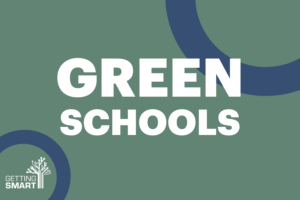
0 Comments
Leave a Comment
Your email address will not be published. All fields are required.